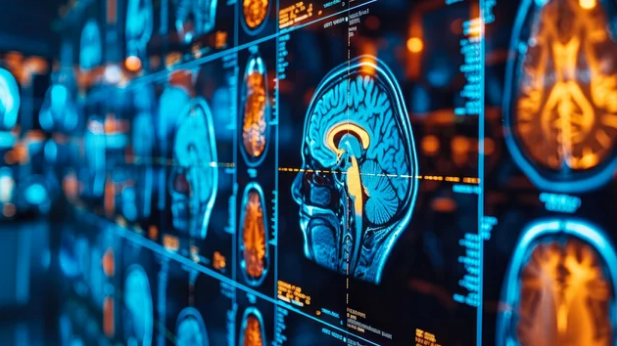The combination of Magnetic Resonance Imaging (MRI) and Artificial Intelligence (AI) is redefining the way medical professionals interpret complex imaging data. Traditionally, MRI scan analysis has relied heavily on human expertise—radiologists meticulously studying slice after slice to detect abnormalities. While effective, this process can be time-consuming, subject to human variability, and challenging in cases with subtle findings.
AI-powered visual analysis is changing the game. By using machine learning algorithms trained on vast datasets of MRI scans, computers can now detect patterns, measure structures, and even predict disease progression—often with speed and precision that rivals or enhances human interpretation.
The Need for AI in MRI Analysis
MRI scans generate large volumes of data, often consisting of hundreds of images per patient. Reviewing these manually can be labor-intensive and prone to fatigue-related errors. Furthermore, subtle anomalies—such as early-stage tumors or microstructural changes—can be difficult to detect with the naked eye.
AI-powered analysis addresses these challenges by:
- Automating repetitive measurements (tumor volume, brain atrophy rates, joint degeneration scoring).
- Highlighting areas of concern for radiologists to review.
- Reducing diagnostic variability between different clinicians.
- Speeding up reporting times to enable faster treatment decisions.
How AI Processes MRI Data
The process typically involves the following steps:
- Image Acquisition
The MRI scan is performed and stored in DICOM format. - Preprocessing
Images are standardized for size, orientation, and contrast to ensure consistent analysis. - Segmentation
AI algorithms identify and outline specific anatomical structures or abnormalities (e.g., tumors, blood vessels, cartilage). - Feature Extraction
The AI system quantifies key characteristics such as shape, texture, intensity, and location. - Pattern Recognition
Using deep learning models—often convolutional neural networks (CNNs)—the AI compares findings to known patterns associated with various conditions. - Prediction & Reporting
The system generates a preliminary diagnosis, risk assessment, or disease progression forecast for clinician review.
Applications of AI-Powered MRI Analysis
1. Neurology
AI tools can detect early signs of neurodegenerative diseases like Alzheimer’s or Parkinson’s, track brain atrophy, and map functional brain networks from fMRI data.
2. Oncology
MRI-based tumor detection, grading, and treatment response monitoring are enhanced with AI-driven segmentation and volume measurement tools.
3. Musculoskeletal Imaging
AI can evaluate joint cartilage integrity, assess ligament injuries, and predict osteoarthritis progression.
4. Cardiovascular Imaging
AI algorithms can quantify heart chamber sizes, wall thickness, and blood flow patterns from cardiac MRI.
Benefits of AI-Enhanced MRI Interpretation
- Increased Accuracy – AI can detect subtle anomalies that may escape human eyes.
- Faster Turnaround – Automated analysis can cut reporting time from hours to minutes.
- Scalability – AI systems can process large volumes of scans without fatigue.
- Decision Support – Radiologists can use AI findings as a second opinion to improve confidence in diagnoses.
Challenges and Ethical Considerations
While promising, AI-powered MRI analysis faces hurdles:
- Data Quality Dependence – Poor-quality scans can lead to inaccurate AI predictions.
- Black Box Problem – Deep learning models often lack transparency in how they reach conclusions.
- Regulatory Approval – Medical AI tools must meet strict safety and accuracy standards.
- Bias Risks – AI trained on limited datasets may underperform for underrepresented populations.
Future Directions
The future of AI in MRI analysis is poised for major advancements:
- Real-Time Analysis – AI could deliver instant feedback during scans.
- Multimodal Integration – Combining MRI with genetic, clinical, and lab data for comprehensive diagnostics.
- Personalized Predictions – Tailoring prognostic models to an individual’s unique imaging and health history.
- Explainable AI – Developing algorithms that can clearly justify their findings for greater trust in results.
Conclusion
AI-powered visual analysis of MRI scans is transforming medical imaging from a purely interpretive process into a collaborative effort between humans and machines. By combining the pattern recognition capabilities of AI with the contextual understanding of radiologists, healthcare providers can achieve faster, more accurate, and more consistent diagnoses.
As technology advances and ethical frameworks strengthen, AI-enhanced MRI interpretation will not replace radiologists—but it will empower them to work smarter, detect diseases earlier, and improve patient outcomes on a global scale.
If you’d like, I can prepare an SEO-optimized meta description, keywords, and structured headings for this article so it ranks high for searches on AI in MRI diagnostics. Would you like me to create that next?
Also Read :
